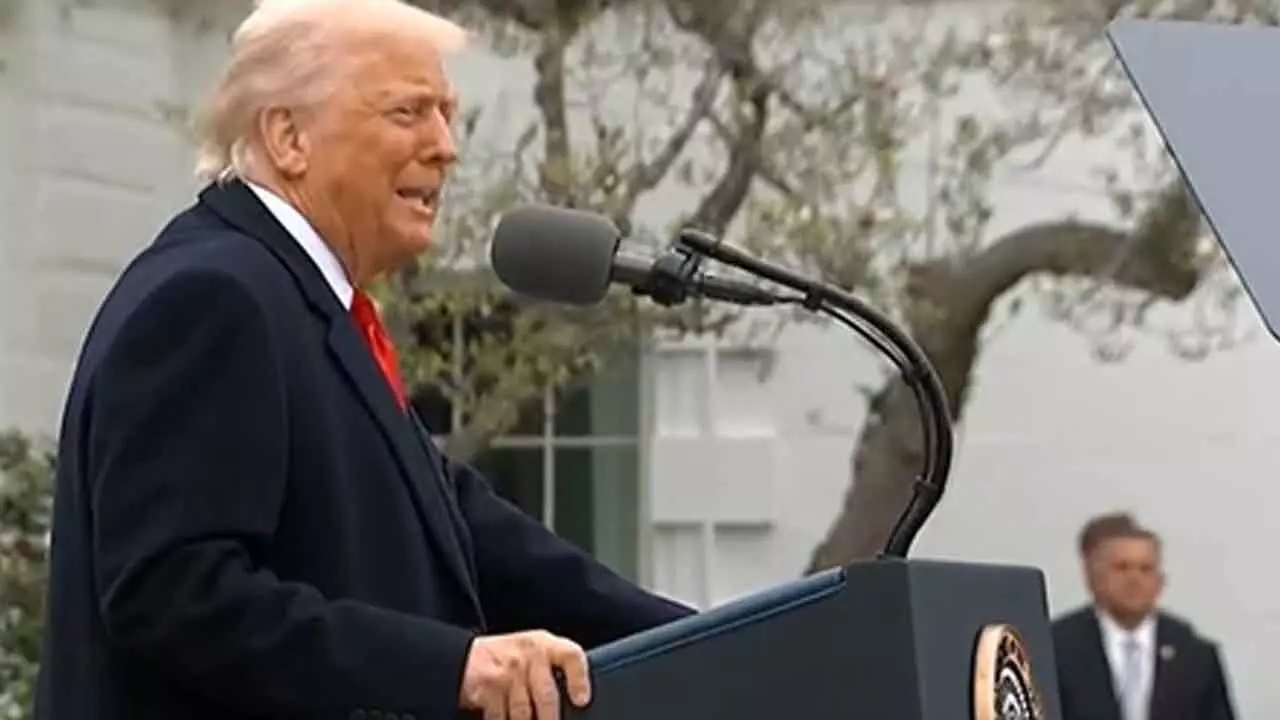Trump’s tariffs, while disruptive, can help many Indian sectors
The Indian government’s reaction to US President Donald Trump’s reciprocal tariffs—“a mixed bag,” not a “setback”—was bang on. His April 2 announcements were supposed to destroy the world; they didn’t
image for illustrative purpose

The Indian government’s reaction to US President Donald Trump’s reciprocal tariffs—“a mixed bag,” not a “setback”—was bang on. His April 2 announcements were supposed to destroy the world; they didn’t. It needs to be emphasized here that his actions have not been arbitrary, idiosyncratic, or capricious; they were based on rational economic principles; these were also in response to political realities.
He specifically targeted the countries imports from which have had an adverse effect on America’s manufacturing base. So, Trump imposed 34 per cent levies on China—Trump’s main target that enjoys the highest trade surplus with the US—taking the total tariff on the world’s largest manufacturing hub to 54 per cent. Similarly, he imposed 46 per cent on Vietnam, and 32 per cent each on Taiwan and Indonesia. On the other hand, friendly nations like India (26 per cent), the UK (10 per cent), and Australia (10 per cent) got off lightly.
It is true that some Indian sectors like gems & jewelry, IT, and auto will find it tougher to export to the US, our largest trading partner; but pharmaceuticals, agricultural goods, textiles, and mobile phone production are expected to gain. The pharmaceutical industry, a cornerstone of India’s export economy, is likely to see increased demand as it provides high-quality, cost-effective alternatives to US consumers. Similarly, Indian agricultural products could find a more favorable reception in the American market, particularly if tariffs on competing nations make Indian goods more competitively priced.
Textiles, another major export sector, could also see positive effects. With tariffs increasing on goods from China, Vietnam, and other key players in the industry, Indian textile manufacturers may have an opportunity to fill the gap and expand their presence in the US market. Mobile phone production, a growing industry in India, could similarly benefit from the shifting global trade landscape.
These realities found reflection in the stock market. It is interesting to note that the market showed far more resilience and maturity than political and intellectual elites who were presenting doomsday scenarios. Rather than reacting with panic, investors recognized that India’s diverse and adaptive economy could weather the storm. The mixed response of different sectors was reflected in stock market movements, with some industries experiencing downturns while others saw gains. This underscores the fact that trade policies, while impactful, do not operate in isolation. The broader economic environment, investor confidence, and adaptive strategies by businesses all play crucial roles in determining outcomes.
Furthermore, the Indian government’s measured response reflects an understanding that international trade is inherently dynamic. Instead of viewing these tariffs as an insurmountable challenge, India has approached them as an opportunity to reassess and recalibrate its trade strategies. Strengthening domestic manufacturing, exploring alternative export markets, and negotiating favorable trade agreements with other nations could mitigate any adverse effects and potentially turn the situation to India’s advantage.
In a nutshell, Trump’s tariffs, while disruptive, do not spell doom for India. The impact is sector-specific rather than economy-wide, and opportunities exist alongside challenges. The Indian government’s balanced stance—acknowledging difficulties while also recognizing potential gains—is a testament to its pragmatic approach to global trade. As businesses adjust to the new trade landscape, India’s economic resilience and adaptability will play a crucial role in determining its long-term success in the international market.

